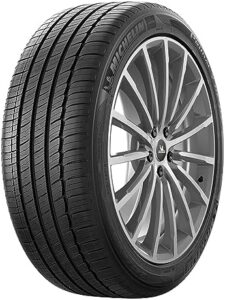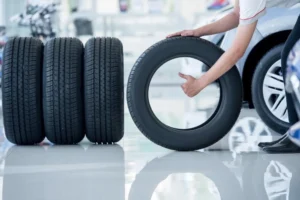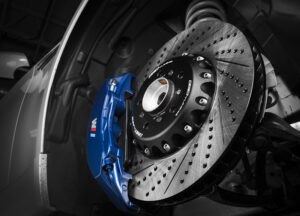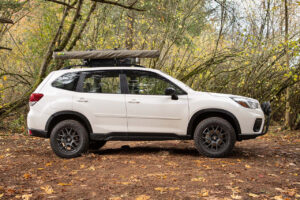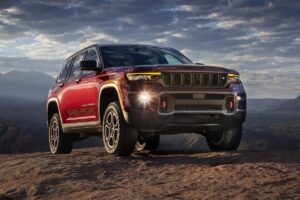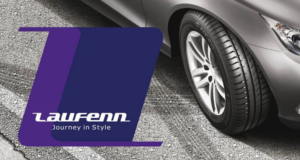Dunlop increases the palette of motorcycle tires and launches two new models of the Geomax series – MX51 for universal use on both soft and hard ground, and MX31, designed specifically for sand and dirt. As a rule, motocross tires are designed with some specific road conditions in mind, where they can show their strongest qualities.
The new Geomax MX51, on the other hand, performs equally well on any terrain. This novelty, which is available in all popular sizes, is based on the legendary D756, from which only the new tread design – GRP (Geomax Reinforced Pattern) differs. The increased distance between the tread blocks allowed to improve acceleration on a straight section of the road, and the change of design elements’ location in the shoulder zone significantly improved the cornering.
Notches in the tread blocks for the front wheel further improve traction on all types of ground. Tie bars between the tread blocks to prevent tearing. The Geomax MX31 was designed for mini crosses and is great for use on soft ground. The patented shoulder blocks have different heights to allow you to easily traverse areas of dirt or sand. The rounded outer edges of the shoulder blocks further improve traction.
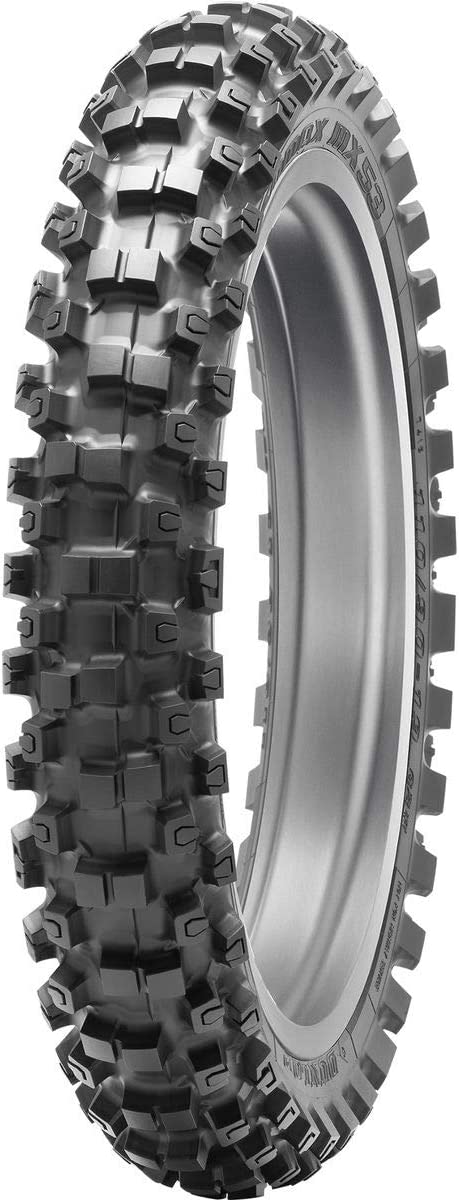
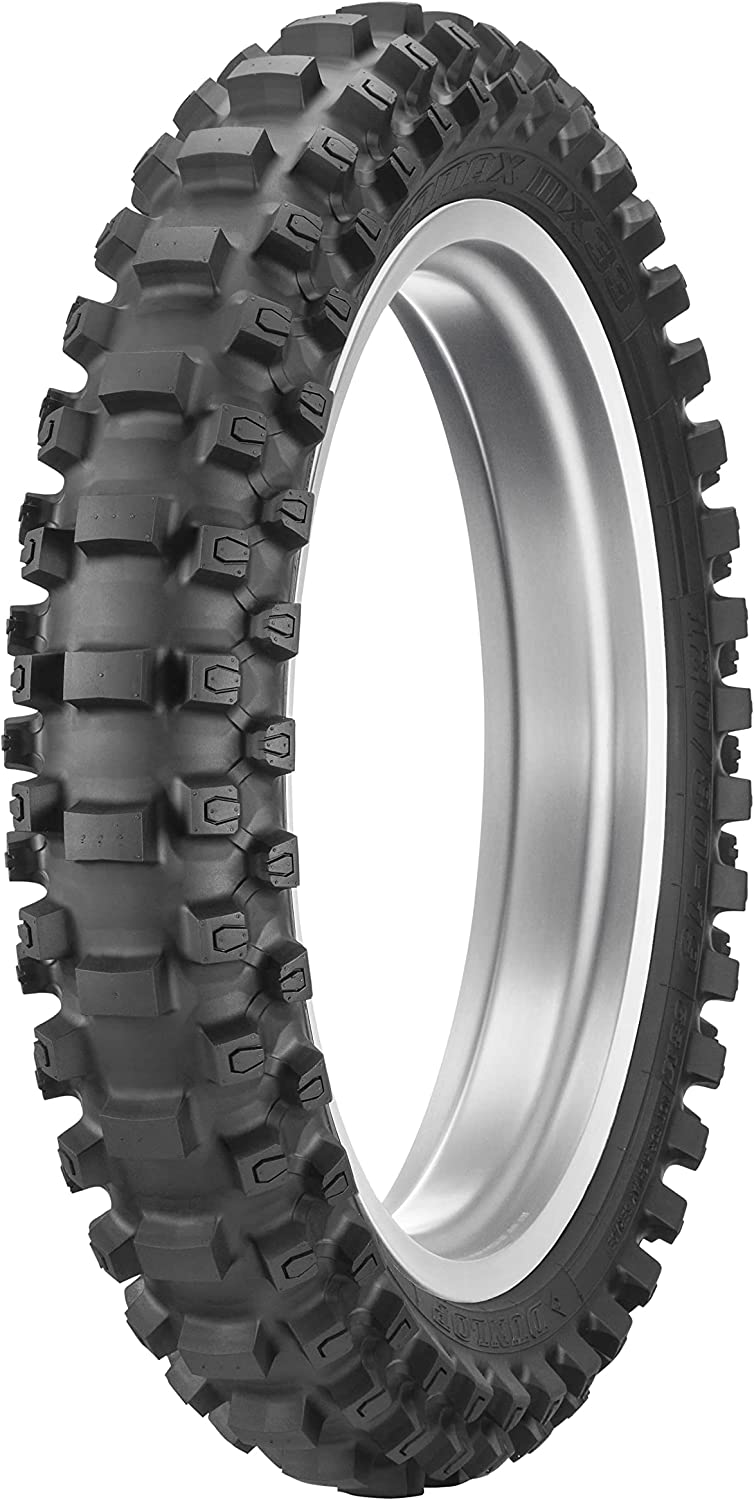
If one is a connoisseur of off-road adventures, they are likely aware that the tire they choose can make or break their riding experience. For those seeking high-performance tires that can withstand challenging terrains, the Dunlop Geomax MX51 and Dunlop MX31 are two popular options. In this comprehensive guide, we will delve into the features of both tires, highlight their differences, and help you determine the right tire for your off-road excursions.
An Overview of Dunlop Geomax MX51 and Dunlop MX31 Tires
The Dunlop Geomax MX51 and Dunlop MX31 tires are both high-performance off-road tires that offer exceptional handling, durability, and traction. The Dunlop Geomax MX51 is designed for intermediate to hard terrain, while the Dunlop MX31 is better suited for soft to intermediate terrain.
Dunlop Geomax MX51 Tire: Features and Benefits
The Dunlop Geomax MX51 is specially engineered to deliver superior handling and durability on hard terrain. It boasts a unique tread pattern that provides excellent stability and traction. The tire’s block-in-block design offers superior shock absorption and reduces tire flex, thereby allowing for better control and increased speed.
The MX51 comes equipped with an enhanced carcass shape that delivers more contact patches for enhanced grip and cornering. The tire is also crafted to minimize the likelihood of punctures and pinch flats, thanks to its optimized block distribution and improved rubber compound.
Dunlop MX31 Tire: Features and Benefits
The Dunlop MX31 is crafted for soft to intermediate terrain and features a unique tread pattern that delivers exceptional traction and self-cleaning capabilities. The tire’s “tie bars” offer superior braking performance and better cornering stability. The MX31’s “shoulder blocks” are engineered to enhance cornering traction and minimize side slip. The tire’s carcass construction provides excellent shock absorption, making it an ideal option for riders who like to push the limits on challenging terrain.
Differences Between Dunlop Geomax MX51 and Dunlop MX31 Tires
The primary difference between the Dunlop Geomax MX51 and Dunlop MX31 tires is the terrain for which they are designed. The MX51 is crafted for intermediate to hard terrain, while the MX31 is engineered for soft to intermediate terrain. Additionally, the MX51 is slightly heavier and has a higher load rating than the MX31.
When it comes to performance, the MX51 offers better handling and stability on hard terrain, while the MX31 shines on soft terrain. The MX31 also provides superior self-cleaning properties, making it an excellent choice for muddy conditions.
Choosing the Right Tire for Your Needs
When deciding between the Dunlop Geomax MX51 and Dunlop MX31 tires, it’s essential to consider the type of terrain you’ll be traversing. If you mostly ride on intermediate to hard terrain, the MX51 is the superior option. However, if you frequently encounter soft or muddy conditions, the MX31 is the way to go.
It’s also vital to consider your riding style and the type of bike you use. Riders who prefer an aggressive riding style and ride heavier bikes may prefer the MX51, while those who favor lighter bikes and a less aggressive riding style may find the MX31 to be a better fit.
Conclusion
Ascertaining the most suitable tire for your off-road escapades is an imperative factor that ought not to be taken lightly, as it could potentially impinge on both your safety and performance. The Dunlop Geomax MX51 and Dunlop MX31 are two formidable alternatives that proffer exceptional traction, handling, and durability. Your judicious selection of an optimal tire hinges upon a prudent evaluation of the terrain you intend to traverse, your particular riding proclivities, and the mass and potency of your motorcycle. Engaging in such a comprehensive analysis will empower you to make a sagacious choice and secure the tire that is most commensurate with your individual exigencies.
Both tires are suitable for racing and are popular choices among off-road racers. However, it’s important to choose the right tire based on the type of terrain you’ll be racing on. If you’re racing on hard terrain, the MX51 is the better choice, while the MX31 is more suited for soft to intermediate terrain.
While both tires are designed for off-road use, they can be used on the road. However, it’s important to note that they are not street-legal and may not provide optimal performance on paved surfaces.
The lifespan of your tires will depend on a variety of factors, including the terrain you ride on, your riding style, and the condition of your bike. It’s recommended to check your tires regularly for signs of wear and tear and replace them as needed.
To determine the best tire for your bike, it’s important to consider the type of terrain you’ll be riding on, your riding style, and the weight and power of your bike. You can also consult with a professional mechanic or tire specialist to help you make the best decision.
While it’s possible to use different tires on the front and rear of your bike, it’s generally not recommended. Using two different tires can affect the balance and handling of your bike and may lead to unsafe riding conditions.

